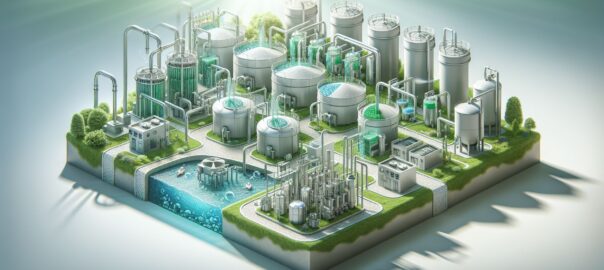Introduction
Water is the most vital resource for life on Earth, yet its availability has become a critical issue worldwide. With urbanization and population growth, wastewater generation is increasing, and proper treatment is paramount to ensure the health of ecosystems and communities. An integrated wastewater treatment system (IWTS) is a comprehensive approach to wastewater management that combines various processes and technologies to treat wastewater effectively before it is discharged back into the environment. This article delves into the intricacies of IWTS, exploring its benefits, technologies, and how it contributes to sustainable water management.
What is an Integrated Wastewater Treatment System?
An integrated wastewater treatment system refers to a cohesive configuration that combines physical, chemical, and biological processes to remove contaminants from wastewater. The integration aspect ensures that all components of the system work in harmony to achieve high levels of water purity, cost efficiency, and environmental protection.
Importance of IWTS
- Ecological Protection: Prevents pollution and protects aquatic life by ensuring that harmful contaminants are removed from wastewater.
- Public Health: Reduces the risk of waterborne diseases by treating sewage effectively.
- Water Reuse: Enables the recycling of water for various purposes, thus conserving fresh water resources.
- Regulatory Compliance: Helps municipalities and industries meet stringent effluent standards set by environmental regulations.
Components of an Integrated Wastewater Treatment System
The typical components of an IWTS include:
- Preliminary Treatment: Screens, grit chambers, and skimming devices to remove large solids and debris.
- Primary Treatment: Sedimentation tanks that allow organic solids to settle out.
- Secondary Treatment: Biological processes like activated sludge or biofilters to break down organic matter.
- Tertiary Treatment: Advanced filtration, nutrient removal, or disinfection to polish the treated water.
- Sludge Treatment: Anaerobic digestion or composting to deal with the byproduct of wastewater treatment.
- Effluent Disposal or Reuse: The treated water is either discharged into a water body or reused for various purposes.
Technologies Used in IWTS
Biological Treatment Innovations
Membrane Bioreactors (MBR)
An MBR combines conventional biological treatment with membrane filtration. The result is a high-quality effluent suitable for reuse in irrigation or industrial processes.
Moving Bed Biofilm Reactors (MBBR)
MBBR technology uses thousands of polyethylene biofilm carriers operating in mixed motion within an aerated wastewater treatment basin. This method is efficient and reduces the system’s footprint.
Advanced Filtration Techniques
Ultrafiltration and Nanofiltration
Ultrafiltration and nanofiltration remove finer particles, colloids, and some dissolved substances, significantly improving effluent quality.
Reverse Osmosis (RO)
RO is a pressure-driven process that can remove salts and inorganics, making the treated wastewater acceptable for various reuse applications.
Disinfection Methods
Ultraviolet (UV) Radiation
UV radiation is an effective disinfection method that inactivates harmful microorganisms without introducing chemical byproducts.
Ozone Treatment
Ozone treatment is a strong oxidizing agent that eliminates organic and inorganic substances, providing additional disinfection.
Benefits of an Integrated Approach
- Efficiency: Integration leads to energy and resource conservation by streamlining the treatment processes.
- Flexibility: Systems can adapt to variations in wastewater flow and composition.
- Element Reliability: Integrated systems are designed to include redundancies and backups.
- Sustainability: Encourages water reuse and minimizes environmental impact.
The Role of Data Integration and Analytics
Leveraging data and analytics within an IWTS leads to smarter decision-making. With real-time monitoring and predictive analytics, operators can anticipate issues, optimize treatment protocols, and improve overall system performance.
Wastewater Data Integration and Analytics
Data gathered from IWTS can include influent characteristics, operational parameters, and effluent quality metrics. When integrated and analyzed, this data can lead to enhanced process control and efficiency.
Wastewater SCADA System Integration
Supervisory Control and Data Acquisition (SCADA) systems centralize data collection and system control, allowing for automated system adjustments and remote monitoring.
Addressing Challenges and Best Practices
Overcoming Integration Challenges
Integrating different technologies and processes into a seamless IWTS can present challenges such as compatibility issues, data overload, and complexity in system management. Solutions include robust system design, thorough commissioning, and ongoing training for operators.
Best Practices in IWTS
- Regular Maintenance: Ensures all IWTS components are functioning correctly, prolonging the life of the system.
- Continual Monitoring: Detects deviations in the process and allows timely interventions.
- Sustainable Design: Considers the full life cycle impact of the system to minimize its environmental footprint.
Conclusion
An integrated wastewater facilities management system exemplifies advancement in water treatment technologies. By effectively combining different processes and leveraging digital tools like data analytics and SCADA systems, IWTS promotes water conservation, environmental protection, and sustainable development.
Sources
-
EPA’s Wastewater Technology Fact Sheet: This provides an overview of wastewater treatment technologies and is a good starting point for understanding IWTS.
EPA Wastewater Technology Fact Sheet -
Water Environment Federation (WEF): WEF is an excellent resource for exploring best practices in wastewater management and staying updated about new innovations.
Water Environment Federation -
Journal of Integrated Environmental Sciences: Academic papers provide insight into the challenges and technical progress in the field of integrated wastewater treatment systems.
Journal of Integrated Environmental Sciences
